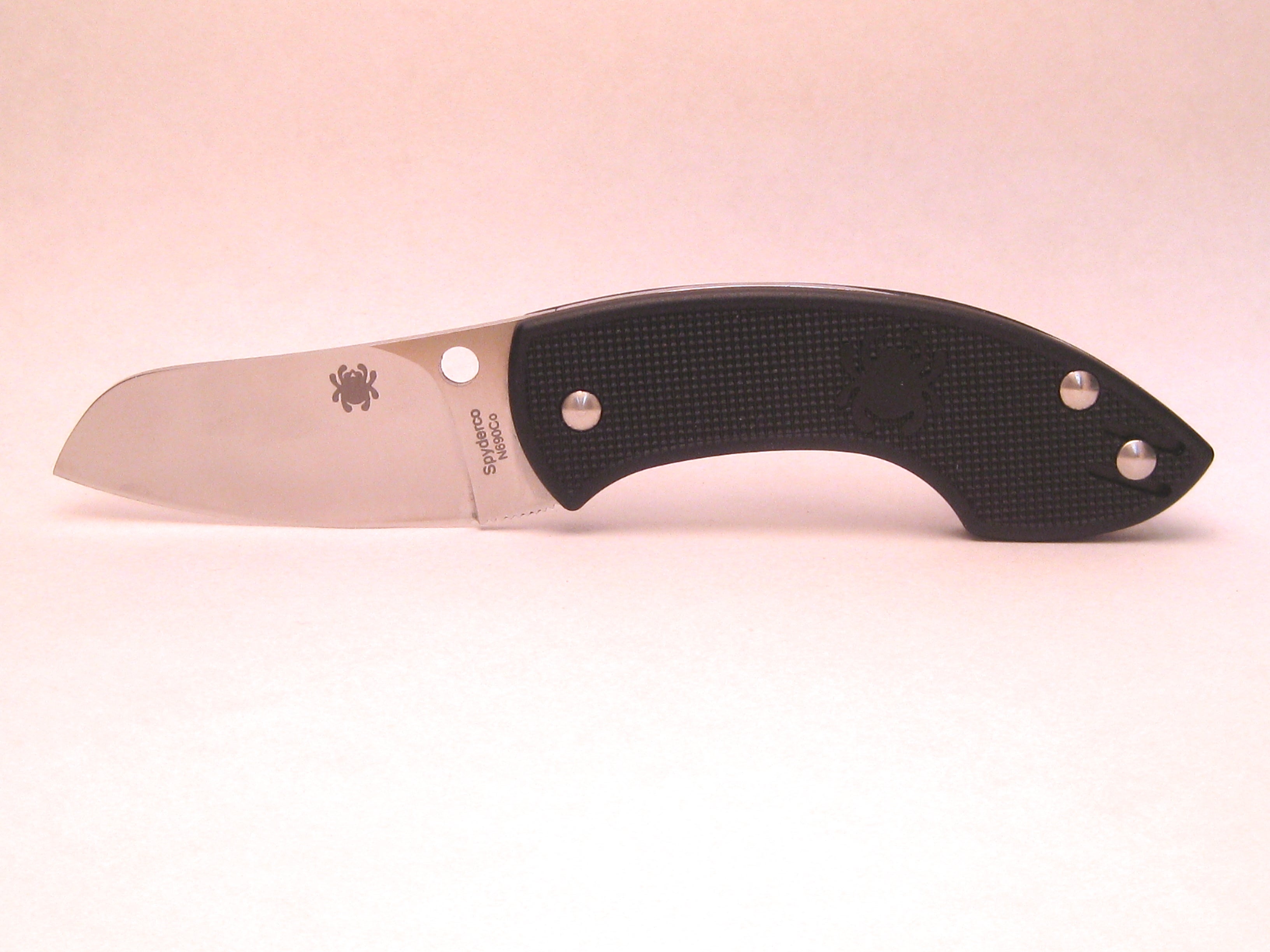The leading edge of knife design: Jens Anso
Tony Sculimbrene 08.05.13

Knives have been mass produced for quite some time now, having made by hand for 2600 millennia previously. (Oldowan tools trace back to 2.6 million years ago and, of course, knives or cutting instruments were among that early set of stones.) In making these tools in a mass produced way, industrialization introduced a degree of uniformity to their shape. This is, of course, a very good thing because it means that we get excellent, cheap knives very, very quickly. But it also hampers truly creative design.
Even modern knives–locking, one-hand opening, clip equipped knives–still, for the most part, use the same blade shapes found on traditional knife patterns. By in large, we are still design slaves to those original shapes: the clip point, the spear point, the drop point, the tanto (which is an import from the East), the wharncliffe, and the sheepsfoot. Sure there are combinations of the two, such as Hinderer’s “Spanto” blade shape (a spear point and tanto combined), but even with our exotic steels and lightning fast deployment methods, we are stuck in a “pattern” mentality.
“We” excludes Jens Anso (pronounced Yens Ansoo, with the “Y” sounding like the “Y” in “Yes”).
Jens Anso is an industrial designer and custom gear maker from Denmark. He has worked on knives full time since 2001, but has been making blades off and on since 1988. The breadth and depth of his innovation is something unseen in the knife world perhaps since Sal Glesser of Spyderco put out his first knife, the C01 Worker.
But for all of Anso’s originality, I originally missed the point entirely. For a long time, I looked at Anso’s weird blade shapes and thought to myself “if it ain’t broke, don’t fix it.” They seemed weird and unnecessarily different. It wasn’t until I actually used one of his knives that I realized just how broken many of those old pattern blade shapes were. I admitted my sins on a recent episode of the Gear Geeks Live (iTunes link) podcast. The Pingo, a knife he designed with Jespers Voxnes, for Spyderco, is a Anso proselytizing device. In fact, all of his knives are.
Many of Anso’s knives eschew the pointy, pointy tip we are used to on knives. Having reviewed more than 50 knives in two years I can tell you that outside of a self-defense application, those pointy tips are more a liability than an aid in doing work. The Pingo‘s stout, rounded over blade shape makes for an excellent roll cutting tool and allows you to do precise, yet high pressure work all the way up to the tip of the knife. I did things with the Pingo that you’d never dare with a spindly, pointy knife like the Kershaw Leek.
Curves, especially along the spine, are also a hallmark of an Anso blade. They are responsible for most of my initial adverse reaction. But now I know, like the rounded tip, they serve a purpose. The curve on the Pingo is an excellent place you rest your thumb during close up cuts. Additionally, after you use one Anso design, you can see how similar they really are. The blade shapes look different, but using one tells you that they all work the same. That is an impressive feat. He uses incredible utility to create a design language all his own.
But the innovations don’t stop with the blade shapes Anso employs. In fact, his most famous and copied design is the “Anso pattern” on handle scales. You have undoubtedly seen it before, but in case you haven’t here is a good shot of his Zulu custom (thanks to Mr. Anso for permission to use his images, this one and the next):
But again, the innovation does not stop. Anso’s customs are well known for their grind as well, a special “Anso”-only combination of a high thin hollow grind on one side of the blade and a medium thicker hollow grind on the other.
Anso’s customs are staggeringly expensive, thanks to a very strong secondary market. And his books are closed. But even the middle class guy can get in on the innovation. I have recently had a chance to use and test the Pingo, a great little knife from Spyderco. It lacks a lock and requires two hands to open (it was designed for the more restrictive European market), but even with those limitations, it is a glorious working tool. The Pingo is really a smaller version of an older Anso designed Spyderco knife, the Rock Lobster. The aforementioned Zulu is also an Anso design, and one of the few production ones with the Anso pattern on the handle. Boker makes a large number Anso collaborations, the Minos and the Albatros among them (with many more on the way), but my prior experience with the brand left much to be desired in terms of fit and finish. Finally, Fox Knives sells an Anso collaboration, the FX-302, which I believe is the only production Anso flipper. They too have a few more Anso designs in the works.
In Ratatouille (a favorite movie of both my son and I), the food critic Anton Ego, voiced by the always superb Sir Peter O’Toole, has a soliloquy at the end where he talks about commentary and criticism. He says that the role of the critic is “to be a friend of the new.” Anso may not be the newest kid on the block, having made knives for more than a decade, but he is by far the most innovative. I think it is not a stretch at all to say that his designs are the newest and most functional the knife world has seen since a guy named Sal poked a hole in the blade of a knife.

